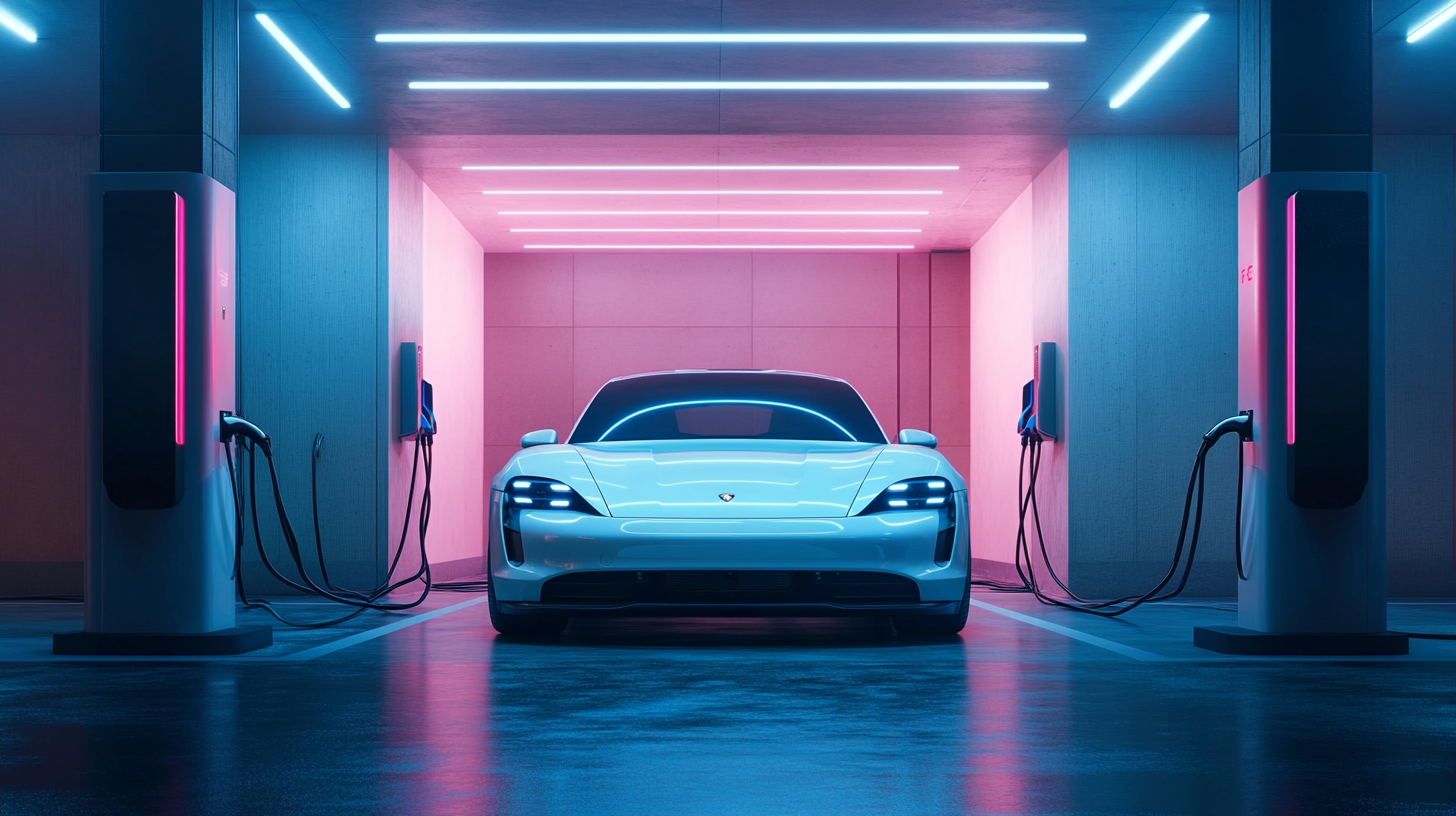Global Market Insights 2025: Navigating the Future of EV Home Chargers for Savvy Buyers
As we move towards an increasingly electrified future, the demand for EV home chargers continues to rise, providing both convenience and efficiency for electric vehicle owners. The global market for EV home chargers is on the brink of significant transformation, driven by technological advancements, government incentives, and a growing commitment to sustainability. Savvy buyers are now more than ever seeking insights into this dynamic landscape, eager to navigate their options and make informed decisions that meet their specific needs.
In 2025, the landscape of EV home chargers is expected to evolve dramatically, with innovative solutions and enhanced features becoming available. Understanding the key trends and factors influencing this market will be crucial for consumers looking to invest in the best charging solutions for their homes. This blog will delve into the latest insights and forecasts in the EV home charger sector, offering guidance to help prospective buyers confidently navigate their choices in this fast-paced and ever-changing environment.

The Rise of Electric Vehicles: Market Trends and Projections for 2025
As we steer into the future of transportation, the rise of electric vehicles (EVs) continues to reshape market dynamics, presenting a unique opportunity for savvy buyers. By 2025, we are likely to witness a significant growth in the adoption of EVs, driven by advancements in battery technology, expanded charging infrastructure, and increasing government incentives aimed at reducing carbon emissions. This transformation not only caters to environmentally-conscious consumers but also paves the way for a more sustainable automotive market. The demand for home EV chargers is expected to surge in tandem with the growing popularity of electric vehicles. Savvy buyers should prepare for the evolving landscape by staying informed about the latest trends in charger technology. As manufacturers innovate with faster charging options and smart features, understanding the various types available—such as Level 1, Level 2, and DC fast chargers—becomes crucial. Additionally, buyers will benefit from recognizing the importance of compatibility with their specific EV models to optimize charging efficiency at home. In parallel, the infrastructure supporting EVs is anticipated to expand significantly. Cities and municipalities are increasingly investing in public charging stations, which complements the home charging experience. This synergy between home and public charging options not only alleviates range anxiety but also enhances the appeal of electric vehicles for potential buyers. As we move closer to 2025, the integration of EV technology into daily life is set to become more seamless, paving the way for a greener, smarter transportation future.

Understanding the Importance of Home Charging Solutions in the EV Ecosystem
As the electric vehicle (EV) market continues to expand, the importance of home charging solutions within the EV ecosystem cannot be overstated. For savvy buyers, understanding these solutions is crucial not only for convenience but also for maximizing the benefits that come with owning an electric vehicle. With the transition to electric mobility, home charging has become a pivotal aspect that influences both consumer choice and overall market dynamics.
Home charging solutions offer a plethora of advantages for EV owners. They provide the convenience of charging at any time without the need to rely on often congested public charging stations. Moreover, advancements in technology, including smart charging systems, enable users to optimize their charging schedules based on electricity rates, further enhancing the economic feasibility of owning an EV. As consumers become more knowledgeable about these options, the demand for efficient and reliable home charging infrastructure is expected to surge.
Furthermore, partnerships between energy providers and mobility companies are shaping the future of home charging. For example, innovative solutions that integrate solar energy with electric vehicle charging are emerging, allowing users to harness renewable energy for their EVs. This shift not only supports sustainability efforts but also makes EV ownership increasingly attractive. As we look towards 2025, it is imperative for prospective buyers to navigate these evolving home charging solutions, ensuring they make informed choices that align with their lifestyle and environmental goals.

Key Features and Technologies of EV Home Chargers for Savvy Consumers
As the demand for electric vehicles (EVs) continues to rise, savvy consumers are increasingly focused on selecting the right home chargers that meet their specific needs. Understanding the key features and technologies of EV home chargers is crucial for making informed decisions. One of the most significant aspects is the charging speed, which is typically categorized into Level 1 and Level 2 chargers. Level 1 chargers utilize standard household outlets and are suitable for overnight charging, while Level 2 chargers offer faster charging capabilities, reducing wait times significantly for daily use.
Moreover, connectivity features have become essential for modern EV home chargers. Many of these chargers come equipped with smart technology that allows users to monitor their charging status via smartphone apps. This functionality not only enables consumers to track energy usage but also optimizes charging times based on electricity rates, offering potential cost savings. Additionally, advanced features such as scheduling and remote access provide added convenience, making the experience seamless for the user.
Safety is another critical consideration for smart buyers. Look for chargers that include built-in safety features, such as circuit breakers and surge protection, to mitigate potential risks associated with charging. Furthermore, compatibility with multiple EV models is important; opting for a charger that adheres to industry standards ensures that it can accommodate future vehicle purchases. As technology continues to evolve, evaluating these features will empower consumers to navigate the market effectively and choose the best EV home charger for their lifestyle.

Cost Analysis: Investing in EV Home Chargers and Potential Savings Over Time
As the electric vehicle (EV) market continues to expand, savvy buyers are increasingly considering the financial implications of investing in home charging solutions. A recent report by Allied Market Research indicates that the global EV charging infrastructure market is expected to reach $39.2 billion by 2027, highlighting the growing importance of home chargers as a cost-effective alternative to public charging stations. With an average installation cost for a Level 2 home charger ranging between $1,000 to $2,500, the initial investment can be substantial. However, the long-term savings are becoming more attractive.
According to the U.S. Department of Energy, the cost of electricity for charging an EV at home averages around $0.13 per kWh. Given that the average EV consumes about 24 kWh to travel 100 miles, charging at home can potentially save owners more than 60% compared to fueling a traditional gasoline vehicle, which can cost upwards of $3.50 per gallon. Over the lifespan of an EV, which is generally around 15 years, these savings can accumulate significantly. Homeowners can also take advantage of time-of-use (TOU) pricing, charging their vehicles during off-peak hours to maximize savings.
Moreover, with various government incentives and rebates available, the effective cost of installing a home charger can be reduced further, making it an economically viable option for many. The 2022 Infrastructure Investment and Jobs Act includes provisions for tax credits up to $1,000 for home charging stations, which enhances the appeal for potential buyers. Overall, the financial landscape for EV home chargers illustrates not only the initial investment but also the potential for substantial savings over time, making it a wise decision for forward-thinking consumers.
Navigating Regulations and Incentives for EV Charger Installations in 2025
As the electric vehicle (EV) market continues to grow, understanding the regulatory landscape and available incentives for EV charger installations in 2025 is crucial for savvy buyers. Governments around the world are increasingly recognizing the need to promote sustainable transportation, leading to the implementation of various policies aimed at supporting EV adoption. These regulations often encompass not only financial incentives for consumers but also guidelines for installation practices and safety standards.
In many regions, buyers can benefit from rebates and tax credits when they install home EV chargers. These incentives can significantly reduce the initial cost, making it more feasible for homeowners to invest in this eco-friendly technology. Furthermore, local and state regulations may require specific permits for installations, which can also influence the overall process and cost. Staying informed about these regulations can help buyers navigate the complexities of installation and ensure compliance while maximizing their financial benefits.
Additionally, understanding the future trajectory of regulations can empower buyers to make informed decisions about their installations. For example, mandates for increased charging infrastructure as part of urban planning could affect residential neighborhoods and influence property values. By anticipating these changes, prospective EV owners can position themselves advantageously in the market. Thus, comprehending both current and upcoming policies will be essential for those looking to enhance their home setup with EV chargers.

